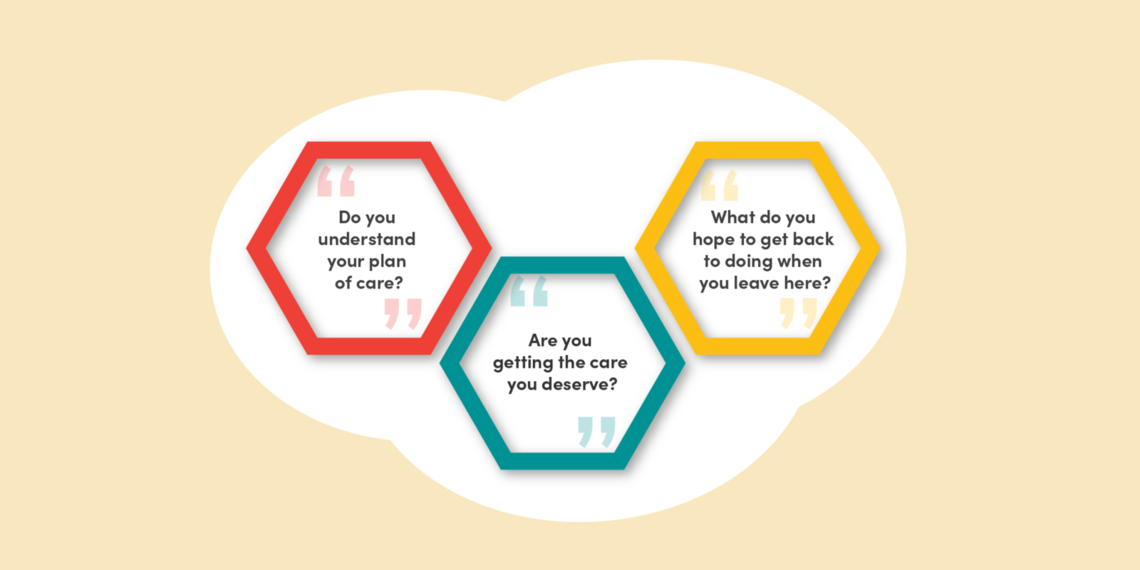urse Leader Rounding is a national best practice where inpatient nurse leaders dedicate time to connect daily with patients, caregivers, and teams at the point of care.
At U of U Health, we build connections one patient at a time and it all begins with a simple conversation. Asking open-ended questions—questions that can’t be answered with a simple yes or no—encourages conversation and promotes meaningful connection.
How to ask open-ended questions
Sometimes the best "questions" are not really questions at all. It can be helpful to use statements, such as, "Tell me how you're feeling right now," or "Talk to me about the surgery you had last week."
If you have questions that work for you, great—keep asking them. If not, below are a few examples of general and targeted questions.
Example questions
| Opening questions |
|
| Consistency of care questions |
|
| Safety concerns |
|
| Pain management |
|
| Care plan |
|
| Communication |
|
Questions informed by contributors and Nurse Leader Rounding pilot leaders Shegi Thomas, Sonia Zafra, and Melissa Kanongataa.
The power of follow-up
Asking follow-up questions is another way to build rapport with your patient—it shows that you are listening and not just checking things off a list. When a patient tells you about a concern they have, ask for more information. A simple “Tell me more about that” or “That’s important. Can you tell me more?” not only conveys listening, but it also helps clarify concerns making resolving any problems easier.
Connecting with caregivers
It’s also important to follow-up with your patient’s family members and visitors if they are present. Ask them what questions or concerns they have about their loved one’s care. They might give you crucial information you otherwise wouldn't be able to collect from the patient.
Learning as a team
As you begin rounding, reach out to your team to learn what questions they’re asking. Together as leaders, you have a wealth of experience that can help customize your interaction to best suit the needs of your patients. Lean on your team to learn and grow your rounding practice.
Emily Izzo
Bridgette Maitre
Nurse Leader Rounding fosters meaningful connection, deepens our understanding of our patients' experiences, and helps us improve as a system. Nursing and education champions Breanna Brannan and Kim Mahoney outline what the process looks like for Nursing Professional Development Practitioners (NPDPs) and offer tips for making connections with patients.
When we talk about being patient-centered, systems thinkers, and engaged experts, nurse leader rounding checks every box. It fosters meaningful connection, deepens our understanding of our patients' experiences, and by sharing what we learn, Nurse Leader Rounding can help us improve as a system. Initiative co-sponsors Tracey Nixon and Mari Ransco outline what’s to come for Nurse Leader Rounding at U of U Health.
Shared governance is a decision-making model designed to empower the people who care for patients. Chief Nursing Officer Tracey Nixon explains what it is, how it impacts you, and what to expect in the coming months.
